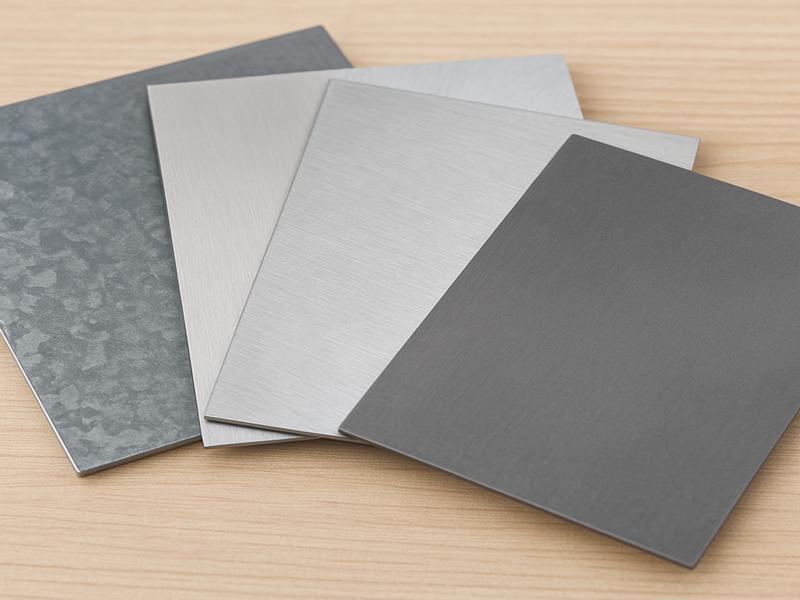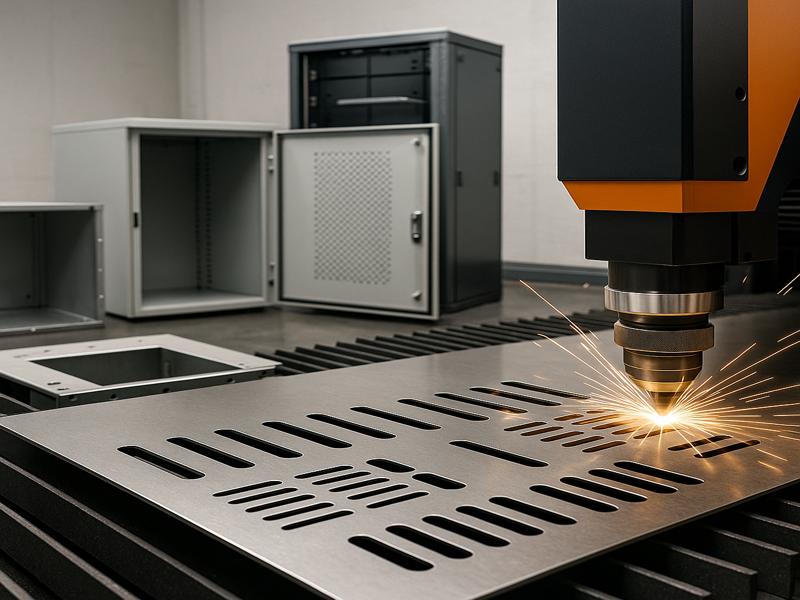In our digital age, telecommunications infrastructure is one of the invisible backbones that support global connectivity. From large data centers to remote cell towers, from fiber-optic cabinets to outdoor antenna housings, reliable communications require a broad array of high-precision fabricated metal components. Precision sheet metal fabrication has emerged as a a critical enabling technology for designing, manufacturing, and deploying robust telecommunications equipment.
The Role Of Sheet Metal Fabrication In Telecom
Telecommunications infrastructure demands components that are:
- Durable, to withstand outdoor or harsh indoor environments (weather, corrosion, temperature swings, vibration),
- Precise, so parts fit tightly (for racks, enclosures, antenna housings),
- Electromagnetically compatible, to house sensitive electronics and avoid interference,
- Versatile, to adapt to custom configurations (various rack sizes, mounting brackets, cooling vents, cable management).
Custom sheet metal fabrication offers all that flexibility: cut, bend, form, weld, and finish metal sheets into tailored parts that meet tight tolerances, custom geometries, and special materials.
Common Parts Fabricated For Telecommunications
A sheet metal shop working in the telecom sector typically handles a wide variety of parts. Some examples:
| Component/part type | Key function in telecom equipment |
| Server racks & cabinets | Provide structural support for servers, switches, routers, fiber optics, and power systems. |
| Enclosures & casings | Protect sensitive electronics from dust, moisture, mechanical impact, and environmental exposure. |
| Antenna housings | Protect antennas and feed equipment, often mounted outdoors and requiring rugged outdoor readiness. |
| Switchgear/distribution panels | House power switching components, power supplies, and electrical distribution. |
| Cable management trays/raceways | Organize fiber cables, power cables, and network cables; provide clean routing and support. |
| Battery backup cabinets | Enclosures for backup batteries often need ventilation, cooling, and structural strength. |
These parts must be engineered not just for static function but often need to incorporate vents for cooling, mounting holes, cable entries, or custom cutouts for connectors, displays, or maintenance access.

Materials Commonly Used
Choosing the right material is a key decision for telecom applications. Cost, corrosion resistance, weight, mechanical strength, and ease of production must all be balanced in the materials. Some commonly used materials include:
| Material | Characteristics relevant for telecom use |
| Galvanized steel | Good corrosion resistance for outdoor or exposed cabinets; robust and cost-effective. |
| Stainless steel | Very high durability, especially in harsh or coastal environments; good mechanical strength. |
| Aluminum | Lightweight, good thermal properties, easier to handle or mount; useful for enclosures or components where weight matters. |
| Cold-rolled steel | Good for indoor, smooth finish, tighter tolerances; often for internal racks or cabinets in climate-controlled rooms. |
Using the right material allows the parts to meet environmental demands (e.g., salt spray, humidity, outdoor weather, temperature extremes) while maintaining dimensional accuracy and finish quality.
Key Capabilities And Precision Requirements
A specialized sheet metal fabricator serving telecom customers typically offers advanced capabilities and controls. Some of the key technical capabilities are:
- Laser cutting for precise cutouts (holes, cutouts for connectors, or vent slots).
- High tolerance forming/bending, achieving very fine tolerances on bends (e.g., tolerances on sheet metal bending of often ±0.003”).
- In-house welding (e.g., MIG, TIG, spot, resistance welding) for strong assemblies such as cabinets, racks, or enclosures.
- EMI/RFI shielding expertise, to ensure enclosures block electromagnetic or radio-frequency interference (which is often a requirement in telecom equipment).
- Rack/cabinet standards: ability to produce racks / 19-inch rack solutions customized for telecom systems.
These capabilities are critical because telecom equipment often has tight mechanical tolerances, specific mounting requirements, and must comply with electromagnetic compatibility standards.

Advantages Of Partnering With A Specialized Fabricator
When telecom equipment manufacturers or integrators partner with an experienced sheet metal fabricator, they benefit from several advantages:
Design for Manufacturing (DFM) expertise
The fabricator can review designs (CAD, sheet metal design) early, suggest optimizations (cutouts, bend lines, mounting points) to reduce cost, improve manufacturability, and reduce lead time.
Tight tolerances
Precision forming and cutting ensure parts align exactly (mounting holes, frames, interfaces), reducing rework and improving assembly reliability.
Customization
Every project might have custom dimensions, custom venting or mounting holes, or special cutouts (fiber ports, connectors). The fabricator can adapt to these requirements quickly.
Quality assurance and certifications
A reputable fabricator can have certifications (e.g., ISO quality standards, defense/communication standards) to ensure consistent quality, traceability, and compliance especially for mission-critical telecom infrastructure.
Full fabrication capability
From prototyping to low-volume production or higher volume runs, including finishing (coatings, powder coating, galvanization, painting, surface finish) so that parts are ready for deployment in telecom equipment.
Integration support
Providing hardware guidance, custom louver or vent tool libraries, mounting hardware guidance, and recommended installation accessories to streamline field installation and reduce errors.
Challenges And Considerations In Telecom Fabrication
While there are many advantages, there are some challenges that telecom integrators or equipment makers must be aware of:
- Environmental exposure: components mounted on towers or outdoor cabinets must resist weather (rain, sun, wind) and temperature extremes. Material selection and finishing are critical.
- EMI / RFI compliance: telecom systems involve sensitive electronics; enclosures and cabinets must shield or isolate electromagnetic interference. Proper design, welds, and shielding materials matter.
- Tight space constraints: telecom equipment (e.g., cell site cabinets, rack units) often must fit into constrained spaces; precision fabrication is needed to maximize usable space and cooling.
- Lead times: custom fabrication can take time (design, prototyping, approvals). Good DFM feedback and prototyping help shorten the cycle.
- Quality and repeatability: for field-deployed telecom infrastructure, parts must be consistent across many units. To guarantee dependable installation and upkeep, tolerances and finishing must be consistent.
Case/Business Credibility (Spotlight On The Fabricator)
A company with decades of experience in custom sheet metal fabrication for the telecommunications industry is well-positioned to serve telecom customers. Some differentiating factors:
- Long track record of working with telecom customers; they understand telecom standards and equipment requirements.
- Advanced fabrication shop with high precision forming and cutting, enabling low tolerance production (e.g., ±0.003” on bends).
- Ability to produce 19-inch rack solutions or custom rack sizes suited to telecom racks (standard telecom/network equipment racks).
- Ability to integrate custom louvers and venting using standardized louver tools and CAD libraries, helping customers design enclosures with proper ventilation.
- Certifications (e.g. regulatory / defense compliance) that allow them to serve projects that require rigorous documentation and traceability.
Future Trends And Relevance
Telecommunications infrastructure continues to evolve. Some relevant industry trends:
Growth of 5G / 6G and edge computing means more small cell cabinets, remote base stations, and distributed network infrastructure. This increases demand for custom enclosures, smaller compact racks, and field-deployable cabinets.
Outdoor cabinets for remote cell sites need robust fabrication to withstand harsh conditions (wind, rain, heat).
Equipment densification means more electronics in smaller enclosures; thermal management (venting, airflow, custom vents, louvres) becomes more critical.
Advances in materials and fabrication allow lighter, more durable enclosures; for portable/remote installations, using aluminum or coatings that reduce weight and improve corrosion resistance is valuable.
Rapid deployment and modular designs require flexibility: fabricators who can prototype quickly and produce low-volume runs are well positioned to service telecom companies deploying infrastructure in new or remote locations.
Custom sheet metal fabrication is a foundational enabling capability for the telecommunications industry. From racks and cabinets to outdoor enclosures, antenna housings, cable trays, and battery backup cabinets, precision manufactured sheet metal parts ensure that telecom equipment is rugged, precise, and ready for deployment in both indoor data centers and remote field installations.
By working with a fabricator who offers end-to-end capabilities — design for manufacturability, tight tolerances, material expertise, EMI/RFI shielding, and finishing — telecom OEMs or integrators can reduce lead times, improve reliability, and ensure compliance with industry standards. As telecom infrastructure continues to expand (5G, edge networks, remote cell sites), the role of durable, well-engineered sheet metal parts will only become more central.

